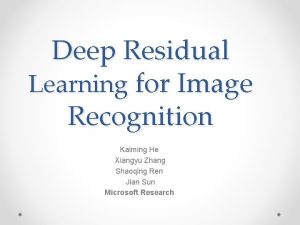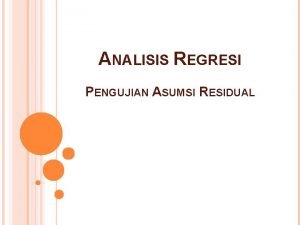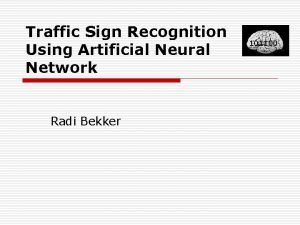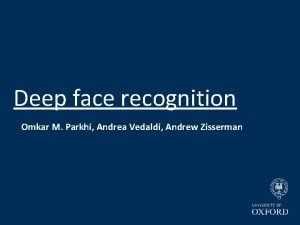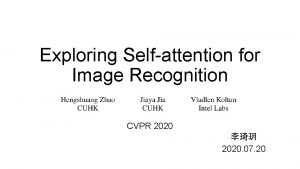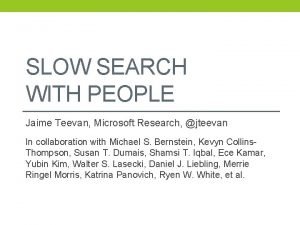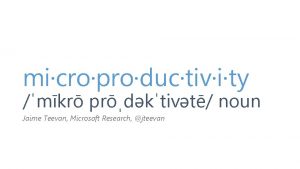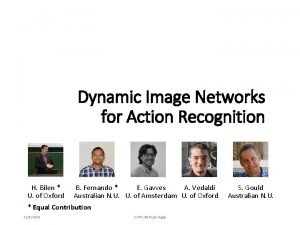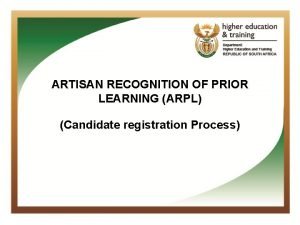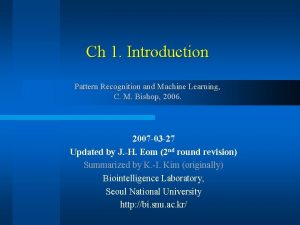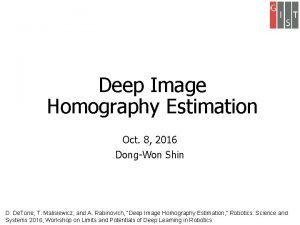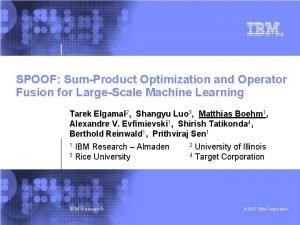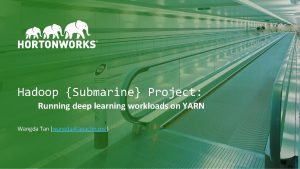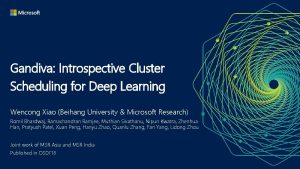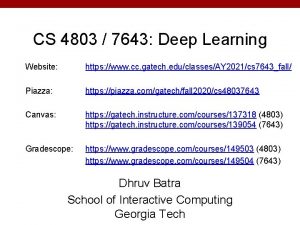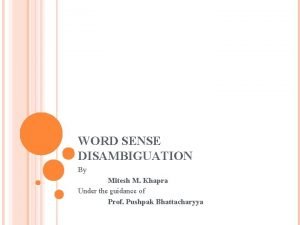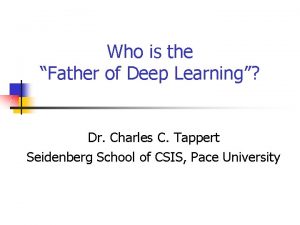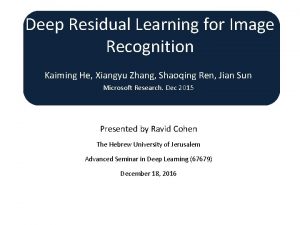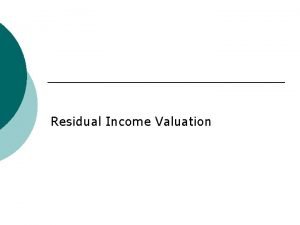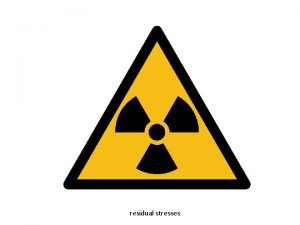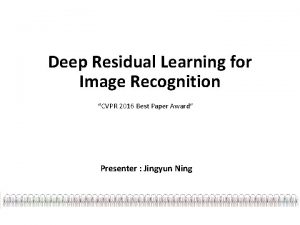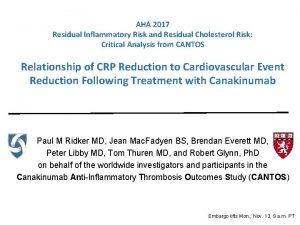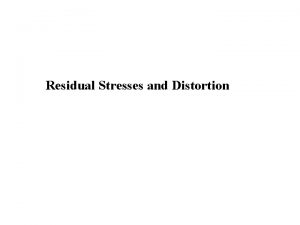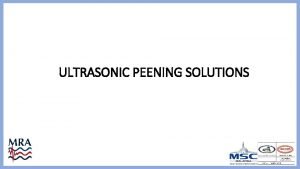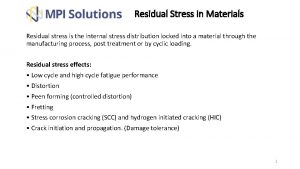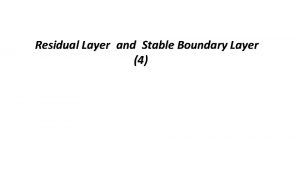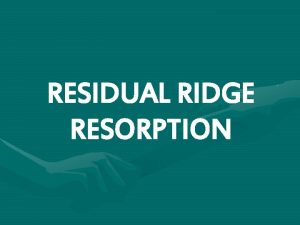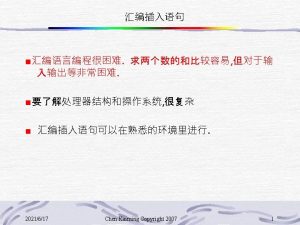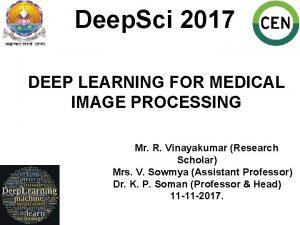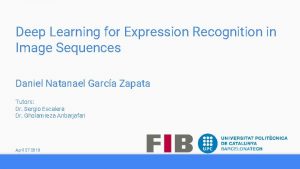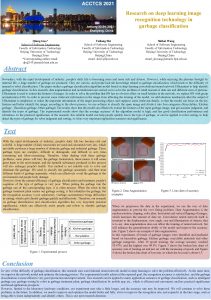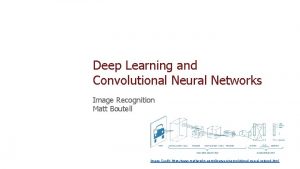Deep Residual Learning for Image Recognition Kaiming He





























- Slides: 29

Deep Residual Learning for Image Recognition Kaiming He Xiangyu Zhang Shaoqing Ren Jian Sun Microsoft Research

Challenge Winner(1) MS COCO -Detection 80 Object Categories More than 300, 000 images

Challenge Winner(2) MS COCO -Segmentation

Challenge Winner(3) Image. Net - Classification, Localization & Detection

Advantages of Depth

Very Deep Networks • Two Similar approaches. • Res. Net. • Highway Nets (R. K. Srivastava, K. Greff, and J. Schmidhuber. Highway networks. • ar. Xiv: 1505. 00387, 2015. )

Degradation Problem

Possible Causes ? • Vanishing/Exploding Gradients. • Overfitting

Vanishing/Exploding Gradients

Vanishing Gradients in the first layer become very small http: //neuralnetworksanddeeplearning. com/

Exploding Gradients in the first layer become very large http: //neuralnetworksanddeeplearning. com/

Batch Normalization(1) • Addresses the problem of vanishing/exploding gradients. • Increases learning speed and solves many other problems. • Each activation in every iteration each layer is normalized to have zero mean and variance 1 over a minibatch. • Integrated into back –propagation algorithm.

Batch Normalization(2) S. Ioffe and C. Szegedy. Batch normalization: Accelerating deep network training by reducing internal covariate shift. In ICML, 2015

BN solves vanishing Gradients(1) S. Ioffe and C. Szegedy. Batch normalization: Accelerating deep network training by reducing internal covariate shift. In ICML, 2015

Residual Learning • 2 weight layers fit F(X) = H(x) – X instead of F(X). • Networks might have “difficulties” fitting the unity mapping.

Similar Architecture – Highway Net R. K. Srivastava, K. Greff, and J. Schmidhuber. Highway networks. ar. Xiv: 1505. 00387, 2015. y

Highway Net vs. Res. Net • The gates C and T are data dependent and have parameters. • When a gated shortcut is “closed” the layers in highway networks represent non-residual functions. • High-2 way networks have not demonstrated accuracy gains with depth of over 100 layers. R. K. Srivastava, K. Greff, and J. Schmidhuber. Highway networks. ar. Xiv: 1505. 00387, 2015.

Res. Net Design Rules • 3 X 3 Filters. • Same number of filters for same feature map size. Feature Map Size halved • Almost no hidden max-pooling. • Not Hidden FC-Layers. • No Dropout. Number of Filters doubled

Res. Net Buliding Blocks Bottleneck Building Block • Building Blocks are stacked to create full networks.

Res. Net and Plain Nets

Res. Nets Vs. Plain. Nets(1) • Deeper Res. Nets has lower train and test errors!

Res. Nets Vs. Plain. Nets(2) • Deeper Res. Nets has lower train and test errors!

Res. Nets Vs. Plain. Nets(3) • For 34 layers Res. Net has a lower error. • For 18 layers error is roughly the same but convergence is faster.

Layer Responses Magnitude • Responses of 3 X 3 layers before non-linearity and after BN. • Residual functions are closer to zero than non-residual.

Dimensionality Change • Shortcut connections assume dimension equality between input X and output F(x). • If dimensions do not match : Zero Pad X Projection mapping (Extra Parameters)

Exploring Different Shortcuts Types • Three Options: • A - Zero padding for increasing dimensions. • B – Projection shortcuts for increasing dimensions; others are identity. • C – All shortcuts are projections.

Overall Results

Uses For Image Detection and localization • Based on Faster RCNN architecture. • Res. Net-101 architecture is used. • Obtained best results on MS-COCO, image. Net localization and image. Net Detection datasets.

Conclusions • • • Degradation problem is addressed for very deep NN. No additional parameter complexity. Faster convergence. Good for different types of tasks. Can be easily trained with existing solvers (Caffe, Mat. Conv. Net, etc…). • Sepp Hochreiter, presumably described the phenomena in 1991.
 Kaiming he
Kaiming he Analisis residual
Analisis residual Deep learning speech recognition
Deep learning speech recognition Traffic sign recognition deep learning
Traffic sign recognition deep learning Omkar parkhi
Omkar parkhi Deep learning vs machine learning
Deep learning vs machine learning Deep learning approach and surface learning approach
Deep learning approach and surface learning approach Deep asleep deep asleep it lies
Deep asleep deep asleep it lies Deep forest towards an alternative to deep neural networks
Deep forest towards an alternative to deep neural networks 深哉深哉
深哉深哉 Exploring self attention for image recognition
Exploring self attention for image recognition Text recognition image
Text recognition image Jaime teevan
Jaime teevan Xkcd machine learning
Xkcd machine learning Action recognition with dynamic image networks
Action recognition with dynamic image networks Plt information session
Plt information session What is arpl
What is arpl Cm bishop pattern recognition and machine learning
Cm bishop pattern recognition and machine learning Cuadro comparativo de e-learning b-learning y m-learning
Cuadro comparativo de e-learning b-learning y m-learning Image super resolution using deep convolutional networks
Image super resolution using deep convolutional networks Deep homography estimation
Deep homography estimation Operator fusion deep learning
Operator fusion deep learning Rnn
Rnn Hortonworks gpu
Hortonworks gpu Gandiva: introspective cluster scheduling for deep learning
Gandiva: introspective cluster scheduling for deep learning Cs 4803
Cs 4803 Autoencoders, unsupervised learning, and deep architectures
Autoencoders, unsupervised learning, and deep architectures Deep reinforcement learning example
Deep reinforcement learning example Sachin tendulkar
Sachin tendulkar Who is the father of deep learning?
Who is the father of deep learning?
